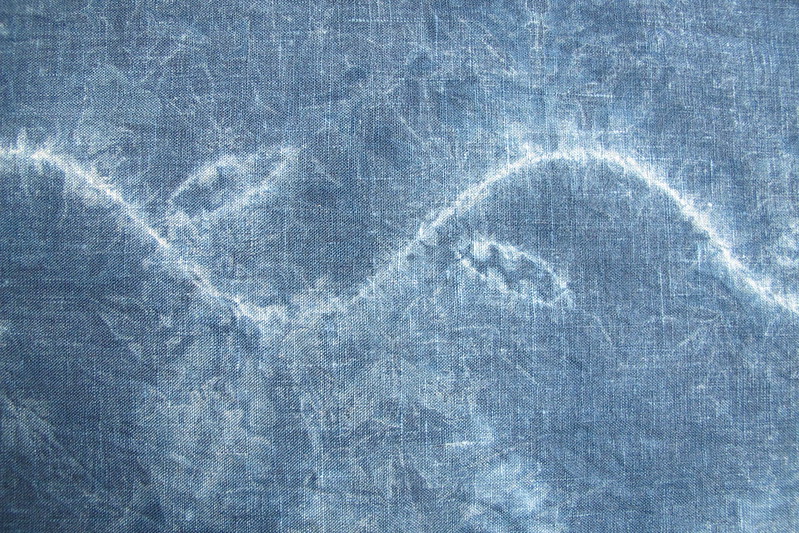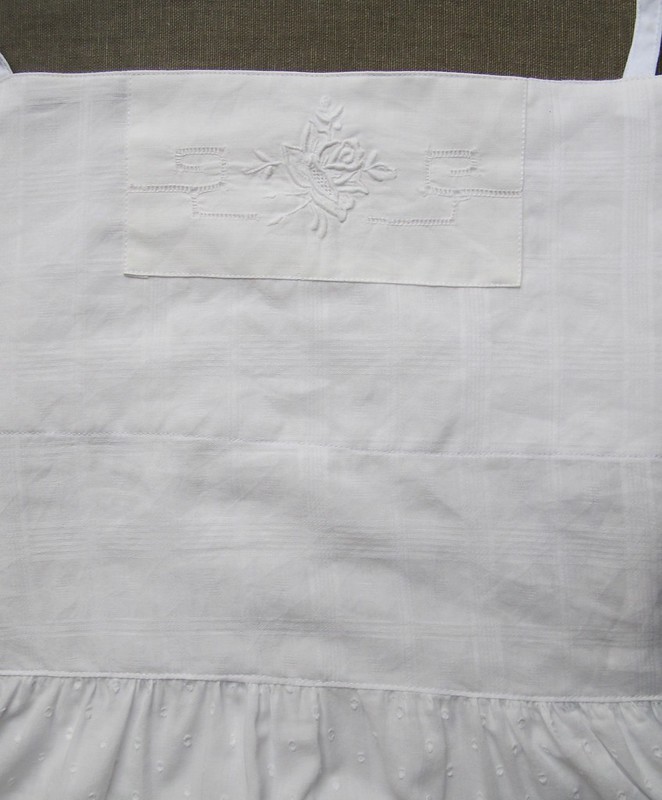A dear friend of mine had a bunch of indigo dyeing ingredients fall in her lap. She was kind enough to invite me to join in with the dyeing day. I had done one session of the dyeing part before, including folded shibori style resist. What neither of us had done was prepare the dye bath. Thankfully we managed this just fine and it worked wonderfully well. It was also enormous fun. Indigo needs a warm, caustic, reduced solution to dissolve, so it’s a bit more complicated than some other dyes. On the other hand no mordant is needed. The process is extra fun because the dyed material comes out of the bath yellow and turns blue on exposure to oxygen. So it changes from yellow to blue via green and teal. Magic! I’m not going to try to explain how it all works. There is plenty on the web already to cover that. I’ve just put a few pics in to demonstrate how fun the colour change is.
Here is some of the first wool yarn to come out of the dye bath
and here is the same yarn mostly oxidised to blue
This is one of my pieces of silk half oxidised. Crazy stuff.
Jumping ahead. These are all my fabrics from the day, rinsed, washed, dried, pressed and waiting. I mean to show more detail of each as I make each of them up.
To the stitch resist samples: This is a technique I’d seen the results of but never tried. So it seemed like a good thing to include this dyeing day.
I had a go at what I concluded was an approximation of the traditional Japanese technique. I did it in a huge hurry without proper research. It worked at least a little, but left quite a bit to be desired. Well enough though that I’m inspired to find out more about how it should be done.
Draw your design. In my case a stylised generic vine design on silk crepe. Sew a tiny pinch pleat in running stitch along each element of the design. I read that one should not cross lines. So the leaves were done separately to the curved stem.
Pull up and tie off as tight as you can.
This is the section with the clearest result. I did a whole dress worth of edgings, most of which came out less well, but still well enough that I’m happy to make up the dress.
Another friend wondered whether a machine twin needle pinch pleat would work. So I gave it a go. I did the gathering by pulling up the bobbin thread.
It works! in the sense that it produces an outline of the design. In my case, at least as well as what I think is the more traditional technique. Again, this is the best section. The effect is different but it’s much quicker to do.
We didn’t manage to use up all the dye in the bath, so we get to have another go later. Woo hoo!































